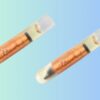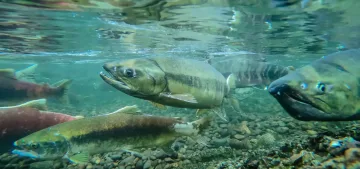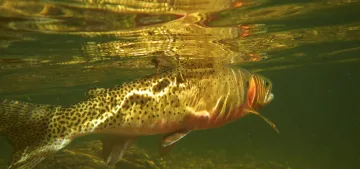When we think of PIT (Passive Integrated Transponder) tags, aquatic research and fish tracking might be the first applications that come to mind. However, the use of PIT tags extends far beyond fish, encompassing a surprisingly diverse range of fields—from racing camels to tiny cockroaches and even to tracking the movement of rocks to study erosion! Here’s an exploration into the unexpected and varied uses of PIT tags in research and animal management.
A Spectrum of Uses Across Species
PIT tags are incredibly versatile, offering a reliable method for tracking and collecting data on various animal species. Here are some of the unique applications across different fields:
Herpetology
In the study of reptiles and amphibians, PIT tags are invaluable. Researchers use them to track movements, monitor population dynamics, and study the life histories of species such as snakes, salamanders, and turtles. These tags help scientists gather critical data without the need to recapture the animals, thereby reducing stress and potential harm to the subjects.
Avian Studies
Birds, particularly migratory species, are another group where PIT tags have proven useful. They are used to monitor bird movements, nesting practices, and breeding patterns. In bat research, PIT tags play a crucial role in studying roosting habits and migration, which are vital for conservation efforts given the ecological importance of bats.
Insect Research
Perhaps surprisingly, even insects are not too small for PIT tagging. Researchers use miniature tags to study behaviors, migration, and population dynamics of various insects, including cockroaches. These studies are crucial for understanding ecological balances, pest control measures, and the environmental impacts of human activity.
Laboratory Animals
In a more controlled environment, PIT tags are routinely used in the study of laboratory animals to ensure accurate record-keeping and tracking throughout various experiments. This application is essential in fields such as genetics, pharmacology, and disease research, where individual history and data accuracy are paramount.
Non-Living Applications: Tracking Erosion with PIT Tags
PIT tags have also made their way into geosciences. Researchers implant these tags in rocks to study sediment transport and erosion patterns. This application is particularly useful in understanding landscape evolution and the effects of climate change on geological formations. By tracking how individual rocks move over time, scientists can gain insights into the processes shaping our planet’s surface.

Advantages of Using PIT Tags
The widespread use of PIT tags across various fields can be attributed to several advantages:
- Minimal Intrusion: PIT tags are small and cause minimal distress once implanted, making them ideal for long-term studies.
- Durability: Designed to last, they do not require a power source and can continue transmitting data throughout the lifespan of a living subject or for the duration of an environmental study.
- High Specificity: Each PIT tag transmits a unique code, which ensures that individual subjects or items can be identified with high precision.
Conclusion
From racing camels to studying the migratory patterns of birds, and even tracking the movement of rocks, PIT tags are a testament to the innovation and adaptability of tracking technology in research. Their diverse applications highlight not only the versatility of PIT tags but also the interconnectedness of natural and scientific disciplines. As technology progresses, we can only expect their usage to expand into more fields, further unlocking the mysteries of both the natural world and our impact on the environment.










Add comment